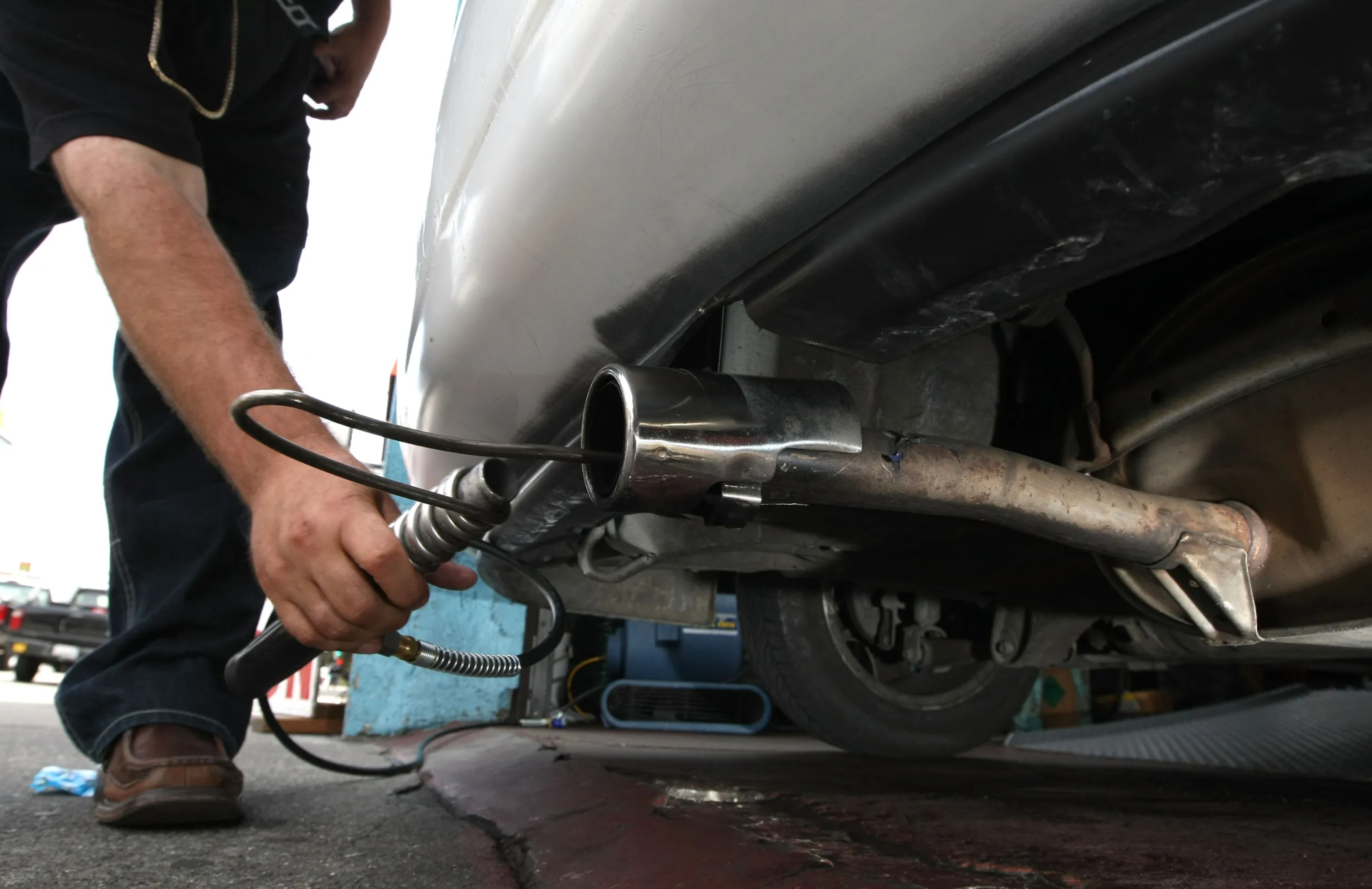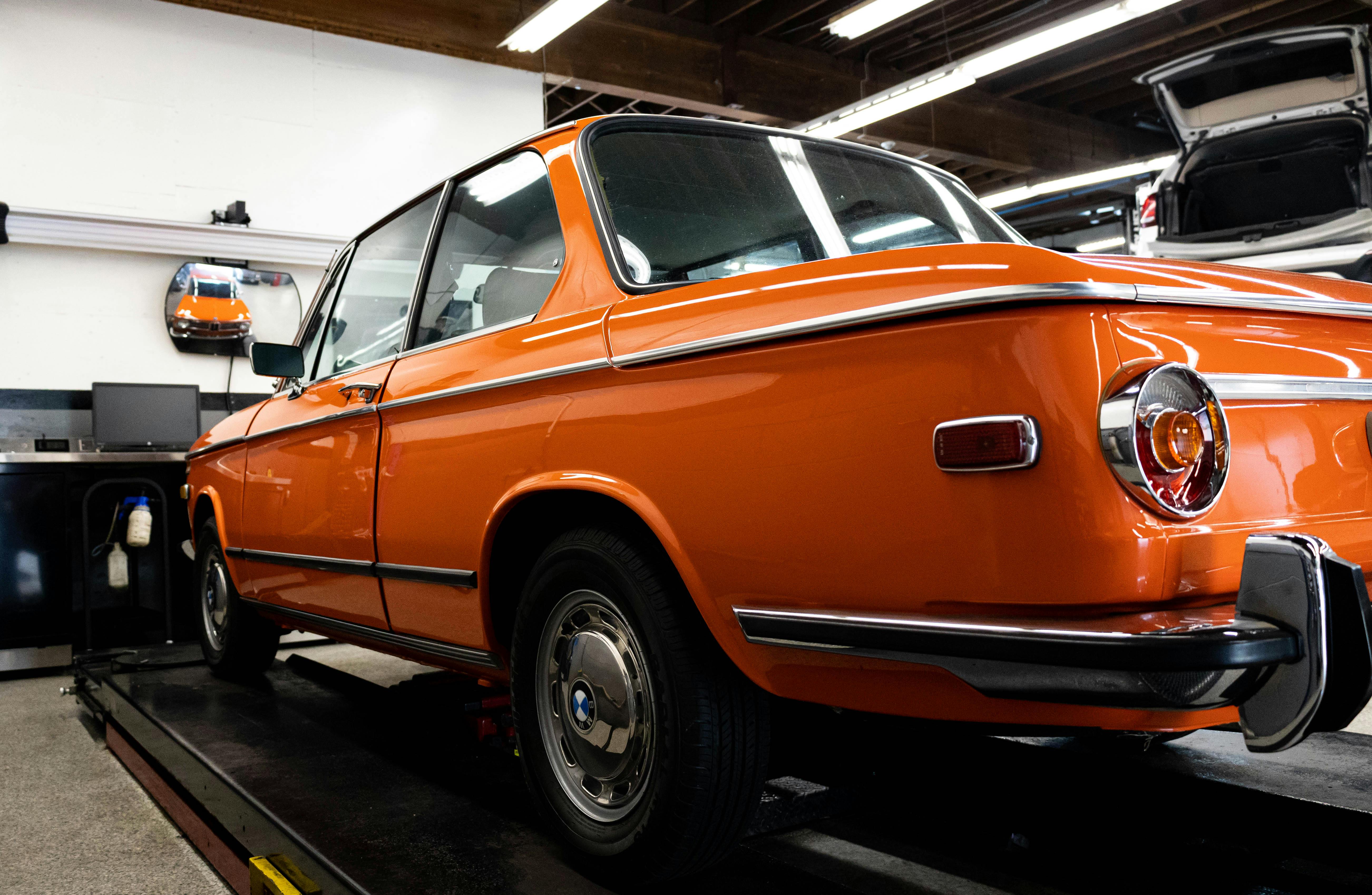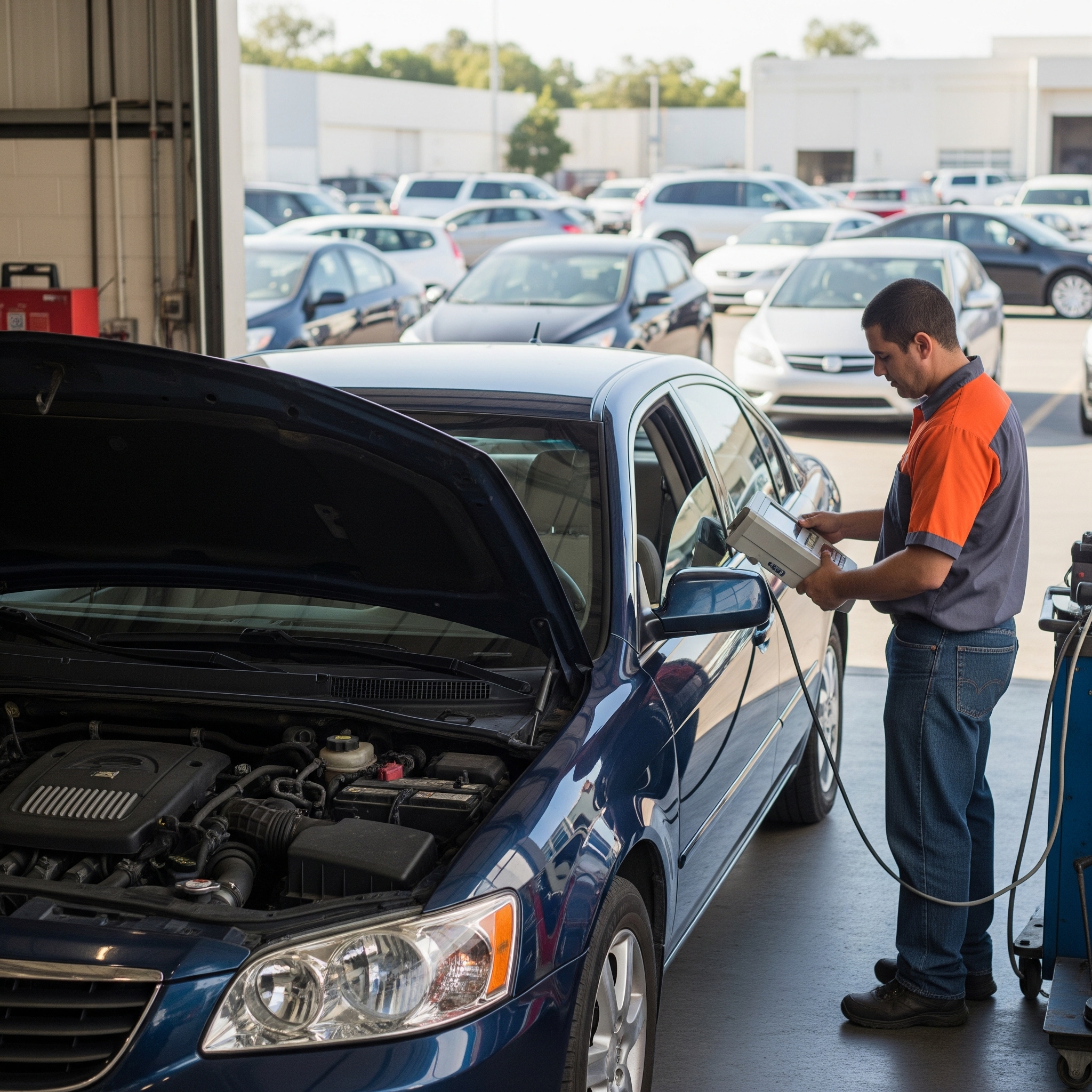How Smog Checks Work: A Detailed Overview
Author
Bahram Najafzadeh
Date Published

For many vehicle owners, a smog check is a familiar but often mysterious process. What exactly is a smog check? Why is it so important? And what can you do to ensure your vehicle passes with flying colors? This comprehensive guide will demystify the smog check process, explaining its purpose, the step-by-step procedure, common reasons for failure, and key tips for preparation.
The Vital Purpose of Smog Checks
Smog checks, also known as emissions tests, are a critical component of state and federal clean air initiatives. Their purpose is to identify vehicles that are emitting excessive levels of pollutants that are harmful to public health and the environment. These pollutants include:
Carbon Monoxide (CO): A colorless, odorless, and poisonous gas produced by incomplete combustion.
Hydrocarbons (HC): Unburned fuel that escapes the engine, which reacts with sunlight to form smog.
Nitrogen Oxides (NOx): Gasses that contribute to smog, acid rain, and respiratory issues.
By mandating these inspections, regulatory bodies aim to:
Improve Air Quality: Directly reduce the amount of harmful pollutants in our atmosphere.
Protect Public Health: Lower the risk of respiratory illnesses, asthma, and other health problems linked to poor air quality.
Ensure Environmental Compliance: Hold vehicle owners accountable for their car’s impact on the environment.
The Smog Check Process: A Step-by-Step Breakdown
A smog check is a multi-part inspection typically performed at a certified testing station. While the exact procedure can vary by state and vehicle, it generally involves these key steps:
1. Visual Inspection
The inspection begins with a thorough visual check of the vehicle's emissions control components. The technician will verify that crucial parts, such as the catalytic converter, oxygen sensors, exhaust gas recirculation (EGR) valve, and other smog-related equipment, are present, properly connected, and have not been tampered with. They will also check the gas cap to ensure it seals correctly, as a faulty cap can lead to the escape of harmful fuel vapors.
2. Functional Inspection
This part of the test evaluates the functionality of several key systems. A primary focus is on the Check Engine Light (CEL). If the CEL is illuminated during the test, the vehicle will automatically fail, as this indicates a fault in the emissions system that needs to be diagnosed and repaired. The technician may also check for visible smoke coming from the exhaust.
3. Emissions Test: OBD vs. Tailpipe
The core of the smog check is the emissions test itself, and the method used depends on your vehicle's model year.
On-Board Diagnostics (OBD) Test: For most vehicles from 1996 and newer, the smog check is primarily an OBD inspection. The technician connects a scanner to the vehicle's computer system (OBD-II port) to read a variety of self-diagnostic monitors. These monitors check the performance of key emissions components, and if any of them are incomplete or show a fault code, the vehicle will fail.
Tailpipe Emissions Test: For older vehicles (typically pre-1996), a tailpipe test is required. A probe is inserted into the vehicle's exhaust pipe to measure the concentration of hydrocarbons, carbon monoxide, and nitrogen oxides while the engine is running. For some vehicles, this may be done on a dynamometer to simulate real-world driving conditions.
4. Results and Certification
After the inspection is complete, the results are compiled into a Vehicle Inspection Report (VIR).
If your vehicle passes, you will receive a certificate of compliance, which is required for vehicle registration renewal. The information is also electronically submitted to the DMV.
If your vehicle fails, the report will provide a detailed breakdown of the reasons for failure, such as specific emissions levels that were too high or which components were found to be faulty.
Common Reasons for Smog Check Failure
A failed smog check is frustrating, but it's often a sign of an underlying issue that needs attention. The most common reasons for failure include:
Illuminated Check Engine Light: The single biggest reason for automatic failure. A lit CEL indicates a stored Diagnostic Trouble Code (DTC) that points to a problem with an emissions-related component.
Faulty Oxygen Sensors: These sensors monitor the amount of oxygen in the exhaust. If they are not working correctly, the engine's air-to-fuel ratio can be thrown off, leading to increased emissions.
Malfunctioning Catalytic Converter: The catalytic converter is arguably the most important emissions control device. If it's old, damaged, or clogged, it won't be able to convert harmful pollutants into less toxic substances, leading to high emissions.
EVAP System Issues: The Evaporative Emission Control System (EVAP) prevents fuel vapors from escaping into the atmosphere. A leak in this system—even from a loose or faulty gas cap—can cause a vehicle to fail.
Incomplete Drive Cycle: For newer vehicles, if the battery has been disconnected or a fault code has been cleared recently, the OBD system's "readiness monitors" may not have completed their self-tests. This will result in an automatic failure, even if there are no other issues.
How to Prepare for Your Smog Check
A little preparation can go a long way in ensuring your vehicle passes the first time.
Clear the Check Engine Light: If your CEL is on, get a diagnostic scan from a reputable mechanic to pinpoint the issue and repair it before your test.
Drive Your Car: Warm up the engine by driving the vehicle for at least 15-20 minutes at highway speeds before the test. This allows the catalytic converter to reach its optimal operating temperature and burn off excess pollutants. It also helps the OBD system complete its readiness monitors.
Perform Basic Maintenance: Simple, routine maintenance can make a huge difference. Change your oil if it's due, replace a dirty air filter, and ensure your tires are properly inflated.
Top Off Fluids: Low fluid levels, especially coolant or oil, can lead to your car running hotter and less efficiently, which may affect emissions.
Check Your Gas Cap: A loose or broken gas cap is a surprisingly common reason for failure. Ensure it's on tight and in good condition.
Smog Check Frequency and Exemptions
The frequency of smog checks and which vehicles are required to get them varies by state. In California, for example, smog checks are typically required every two years for most vehicles that are more than eight years old.
Common exemptions include:
Newer Vehicles: Many states, including California, exempt new cars from smog checks for the first several years (e.g., 8 model years in California), as they are equipped with advanced emissions technology.
Older Vehicles: In California, gasoline-powered vehicles from 1975 or older are generally exempt.
Electric Vehicles (EVs): Since they produce zero tailpipe emissions, EVs are universally exempt from smog checks.
Certain Vehicles: Motorcycles, trailers, and some heavy-duty diesel trucks may also have specific exemptions.
By understanding the process and taking proactive steps to maintain your vehicle, you not only improve your chances of passing but also contribute to a cleaner, healthier environment for everyone.

Stop worrying about your smog check. Use our simple checklist to ensure your car passes the first time and save yourself a re-test.

Discover what a smog check is, why it's required, and how to get through the process with ease. Plus, find out how SmogCheck.com helps you.